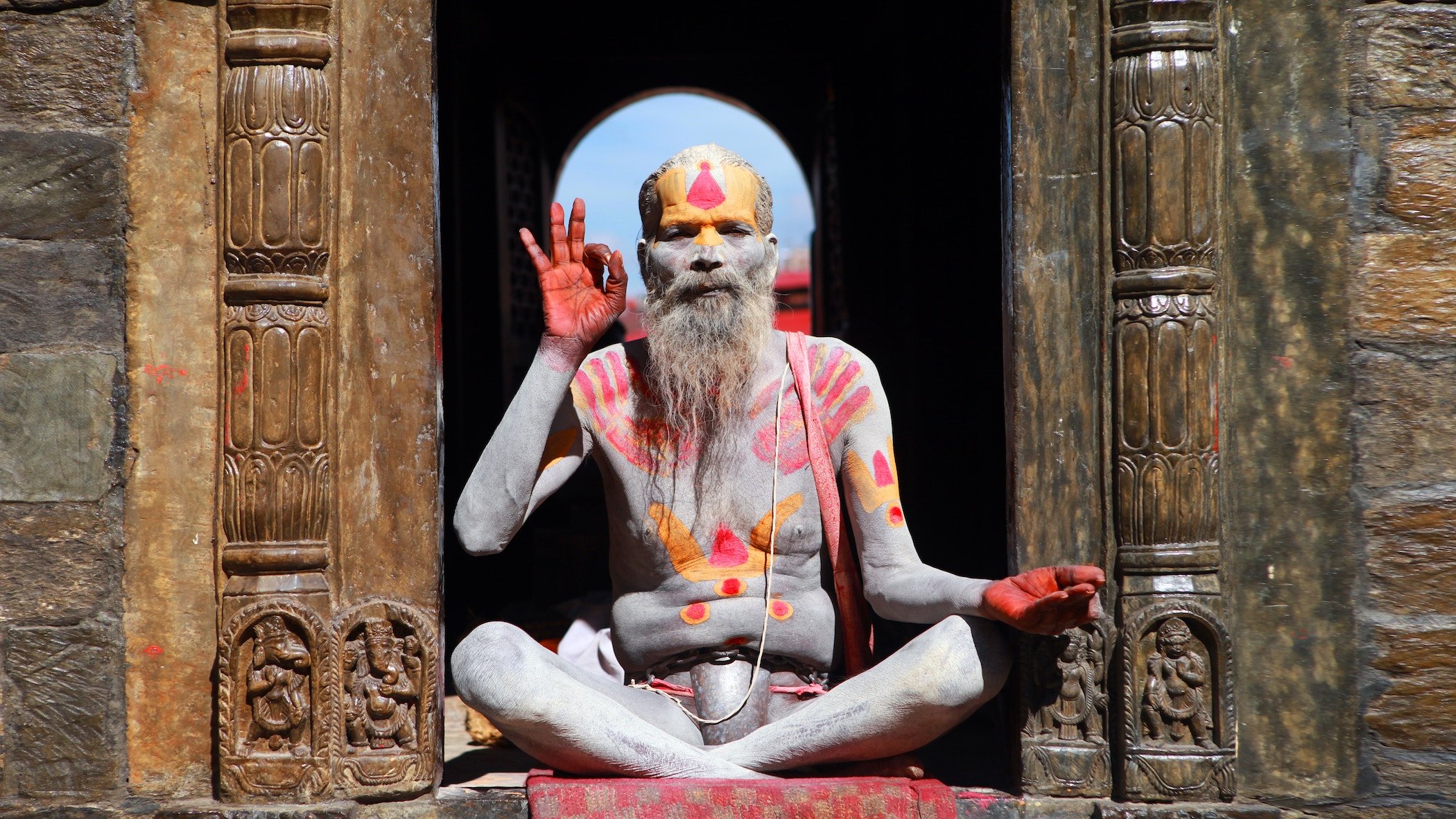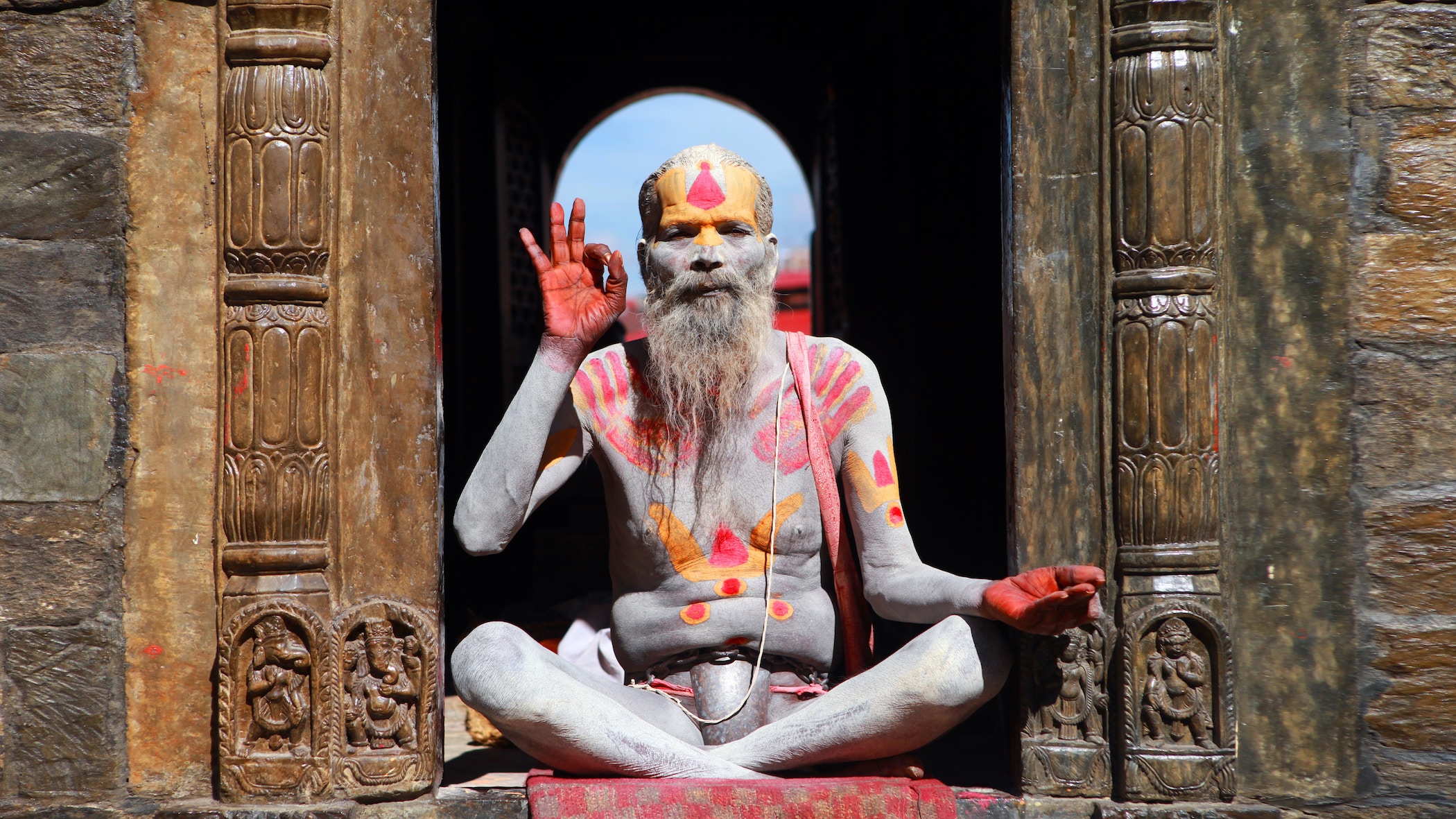Meditation Methods and Benefits
Meditation methods are numerous and varied and have been around for thousands of years. And there is a reason why: meditation is so very good for you.
This brief article will acquaint you with the most important schools of meditation and a few meditation techniques, while providing you with an appreciation for the practical benefits meditation may bring to your life. Those who have a meditation habit will tell you that nothing could ever replace it. I try to meditate every day, and it is almost always the most joyful part of my day — and my doctor tells me it's one of the best things I can do for my heart and brain, mind and soul.
 Not all meditators look like this one. Anyone can learn to meditate and there are many ways to meditate.
Not all meditators look like this one. Anyone can learn to meditate and there are many ways to meditate.Where Does Meditation Come From?
Many people think meditation comes from yoga and others believe yoga comes from meditation. Indeed, there is a link, but let's just say that meditation is an ancient practice. The ancient Egyptians, along with many other cultures, developed meditation methods to foster inner peace and spiritual advancement.
Primary Schools of Meditation
The main meditation methods include Transcendental Meditation, Vipassana, Kundakinuin meditation, Chakra meditation, Mantra meditation, Contemplative meditation, walking meditation, Sound bath meditation and Zuowang (sitting forgetting) meditation. These types of meditation are among the most common, but there are others, as well.
Modern Forms of Meditation
Today most people tend to follow a modernized approach to the ancient art of meditation, and many people prefer some form of Mindfulness meditation. Thomas William Rhys Davids coined the term "mindfulness" in 1881, which basically means sitting in the moment or "remembering the present."
Jon Kabat-Zinn, a professor of Medicine at the University of Massachusetts Medical School, was instrumental in popularizing the term "mindfulness" in the west and developed stress reduction programs based around mindfulness practice.
Meditation Methods and Modern Research
"Mindfulness" has led to numerous studies on meditation as a stress reducer and an effective form of psychotherapy. Modern science has shown that meditation produces many benefits and positive side effects, such as decreasing stress, improving physical and psychological health, improving immune system function, fighting disease, improving attention and mental clarity, and supporting positive changes in attitude and mental health.

Meditation Methods in My Psychotherapy Practice
Early in my career as a psychotherapist, I found that teaching my clients to meditate improved their overall self-confidence, self-awareness, and self-regard, as well as improving their response to difficult life experiences, and it proved to be an excellent therapy for Post-Traumatic Stress Disorder.
For example, I led a weekly meditation group in which I taught seven-year-olds basic meditation skills, and in all cases their parents reported improvements in school performance, psychological integration, and overall well-being.
Also, I used meditative therapy to assist victims of violence, abuse, and traumatic life experiences to deal with their traumatized brains and to overcome the painful ill-effects more quickly (and often more effectively) than with traditional forms of treatment. Nowadays, mindfulness techniques play a part in many forms of therapy, and there is mountain of research as to the effectiveness of meditation in several areas of life.
In addition, I have used meditation techniques to great advantage in helping athletes, students, artists and musicians to improve their performance and creativity. I have worked with tennis players who competed in the US Open, football teams, and other kinds of athletes to visualize success and to play their best games by focusing, relaxing and playing within themselves.
My Own Personal Experience with Meditation
In my own life, meditation has helped me in countless ways, and it has become a powerful tool for developing greater spirituality, and for solving the problems of everyday life. I have tried several types of meditation and evolved my own personal approach. And I have taught and utilized meditation techniques in my therapy practice for decades. I have used the wonderfully relaxing music of Stephen Halpern in therapy and meditation for many years, as well, which can be very helpful in attaining a pleasant state of relaxation.
Although I practice several aspects of mindfulness meditation, for stress reduction and relaxation, my favorite meditation method is Vipassana meditation, which can help you to develop a strong sense of inner peace, deeper understanding, and greater compassion, and can lead to heightened levels of insight and awareness.
Recent studies show that Vipassana Meditation lowered stress levels and resulted in a marked improvement in anxiety and depression among the participants.
Where to Start If You Want to Learn How to Meditate
There are many ways to learn meditation. The important thing is to start somewhere. Just get going. I often recommend learning how to relax as the first step to building a meditation practice. If you can't relax, you won't be able to concentrate or let go of stress. Learning relaxation skills will improve your mental health considerably, as well. If you would like a little help, my Journey to Relaxation guided imagery audio will help you to get started on the right path. Once you can relax deeply, you can learn how to maintain the relaxation response, resist distracting thoughts, and build on that. Then you'll be meditating!
 Meditating in the mountains is one of my favorite ways to meditate. Surrounding yourself with nature will make it easier to meditate, but you can meditate anywhere.
Meditating in the mountains is one of my favorite ways to meditate. Surrounding yourself with nature will make it easier to meditate, but you can meditate anywhere.Tap Into Nature
One of my favorite meditation methods is to tap into nature. You can do this in different ways, but for me a walking meditation can be very rewarding. It's simple and easy, although it may take a little time to get used to it, if you are a couch potato or home body who rarely ventures outside.
Hiking is one thing. Meditative walking is quite another. I like to walk slowly taking time to observe the birds, bees, and animal life that may be around, stopping to smell the wildflowers or to listen to a waterfall. Watching a sunrise or sunset, observing the clouds or focusing all my attention on the breeze that tickles my skin can be a wonderful part of a nature meditation. You can walk among fallen leaves or sit on a rock or stand still and allow the rabbits to hop right up to you!
The important thing to remember with nature-based meditation methods is to take your time, be quiet, and respect all the nature around you. You can perform a walking meditation in your own backyard if you have a small garden, or in your local park, or a nice meadow or a sandy beach near a body of water, virtually anywhere you can tap into the beauty and tranquility of nature. Simply walk, listen and observe. There is no one way. Just experiment and have fun. If you go ten yards in ten minutes, that's fine. Notice how walking gently upon a path lowers your stress automatically.
Your pulse rate may slow down a bit, your blood pressure may decrease a little, and most importantly your stress level will plummet. You may feel like you're a part of the universe and all creatures great and small. You may feel closer to your Higher Power. You may feel a sense of inner peace. There are so many possible benefits it would be difficult to count them all.
Try it. You'll like it.
Meditation Methods in Sum
Meditation is one of the most beautiful and rewarding activities in all the world. There are numerous benefits, and many meditation methods you can try. Why not start meditating your way to lower stress, decreased depression and anxiety, and to greater achievement and success, and quite possibly a deeply felt peace of mind?


